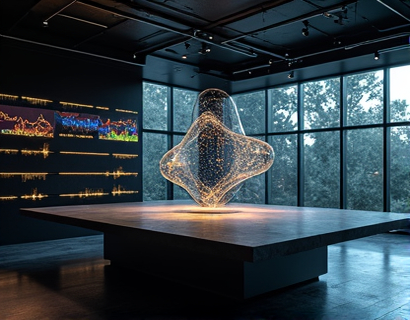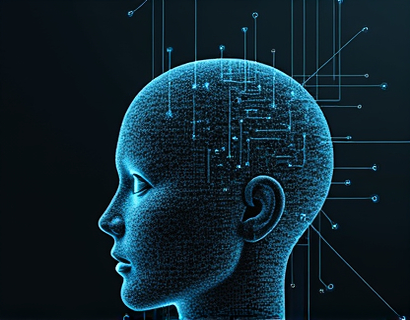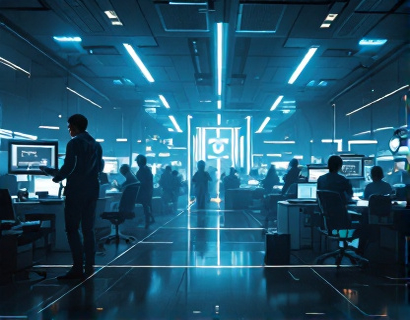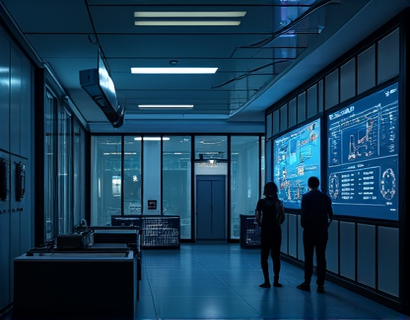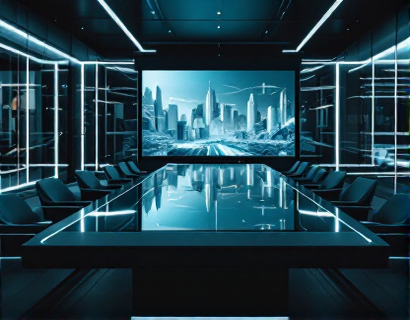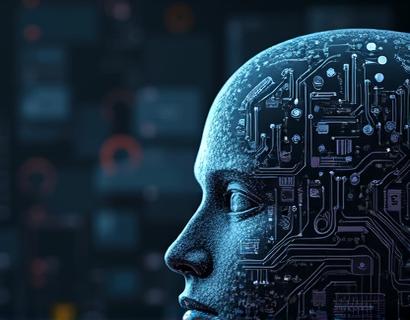UX Design Trends 2025: Mastering Digital Transformation with Expert Strategies and Insights for Enhanced User Experience
In the rapidly evolving landscape of digital products and services, UX design plays a pivotal role in driving success and user satisfaction. As we step into 2025, the field of UX design continues to evolve, influenced by technological advancements, changing user behaviors, and emerging design trends. This comprehensive guide aims to equip UX designers and enthusiasts with the latest expert strategies, practical tips, and insights to master digital transformation and enhance user experience.
Understanding the Current UX Design Landscape
The UX design landscape in 2025 is characterized by a focus on inclusivity, sustainability, and advanced technologies. Inclusivity in design ensures that digital products are accessible and usable by people of all abilities, cultures, and backgrounds. This trend is driven by a growing awareness of the importance of diverse user needs and the legal requirements for accessibility in many regions.
Sustainability is another key trend, as businesses and designers recognize the environmental impact of digital products. This involves optimizing websites and applications for lower energy consumption, reducing digital waste, and promoting eco-friendly practices. The integration of sustainable design principles not only benefits the environment but also resonates with consumers who increasingly prioritize eco-conscious brands.
Emerging Technologies Shaping UX Design
Artificial Intelligence (AI) and Machine Learning (ML) are revolutionizing UX design by enabling more personalized and intuitive user experiences. AI-driven tools can analyze user behavior, predict preferences, and automate design processes, allowing designers to focus on higher-level creative decisions. For instance, AI can generate design prototypes, optimize layouts, and even create content, streamlining the design workflow and enhancing efficiency.
Augmented Reality (AR) and Virtual Reality (VR) are also making significant inroads into UX design. These technologies offer immersive experiences that can transform how users interact with digital products. AR can overlay digital information onto the real world, enhancing navigation, education, and entertainment. VR, on the other hand, creates entirely virtual environments for training, simulation, and gaming, providing unparalleled levels of engagement and interaction.
Design Systems and Component-Based Design
Design systems and component-based design are becoming essential practices for maintaining consistency and efficiency in UX design. A design system is a collection of reusable components, guidelines, and principles that ensure a cohesive user experience across multiple products and platforms. By standardizing design elements, teams can reduce development time, improve collaboration, and ensure a consistent brand identity.
Component-based design takes this a step further by treating UI elements as independent, reusable components. This approach allows for greater flexibility and scalability, as components can be easily updated and reused across different projects. Tools like Figma, Sketch, and Adobe XD support component libraries, making it easier for designers to implement and manage design systems.
Voice User Interface (VUI) Design
The rise of smart speakers, virtual assistants, and voice-activated devices has made VUI design a critical area of focus. Designing for voice requires a different set of principles compared to traditional interfaces. Key considerations include natural language processing, conversational flow, and context awareness. UX designers must craft conversations that are intuitive, error-tolerant, and aligned with user expectations.
To create effective VUI designs, start by understanding the user's intent and the context in which the voice interaction will take place. Use clear and concise language, provide feedback to the user, and design for failure cases where the system may not understand the command. Testing VUI designs with real users can help identify and resolve usability issues, ensuring a seamless and satisfying experience.
Microinteractions and Feedback
Microinteractions are small, focused interactions that provide immediate feedback to users, enhancing the overall user experience. These can include animations, notifications, and subtle visual cues that confirm user actions or provide information. In 2025, microinteractions are expected to become even more sophisticated, leveraging AI and animation to create more engaging and meaningful interactions.
For example, a loading spinner that transitions into a progress bar can keep users informed and reduce frustration. Animated transitions between screens can make navigation feel smoother and more intuitive. To effectively use microinteractions, ensure they are subtle, relevant, and enhance the user's understanding of the system's state.
Personalization and User-Centric Design
Personalization is a key trend in UX design, driven by the desire to create tailored experiences that resonate with individual users. By leveraging data and analytics, designers can deliver content, features, and interactions that are relevant to each user's preferences and behavior. This not only improves user satisfaction but also increases engagement and loyalty.
User-centric design remains at the core of personalization efforts. This approach involves understanding user needs, behaviors, and motivations through research and testing. Personas and user journeys can help designers empathize with users and make informed design decisions. A/B testing and user feedback are essential for refining personalized experiences and ensuring they meet user expectations.
Accessibility and Inclusive Design
Accessibility and inclusive design are not just ethical imperatives but also business necessities. Ensuring that digital products are usable by people with diverse abilities and backgrounds is crucial for reaching a broader audience and complying with legal standards. In 2025, accessibility will continue to be a focal point in UX design.
Implementing accessibility best practices involves using semantic HTML, providing alternative text for images, ensuring keyboard navigability, and adhering to color contrast guidelines. Designers should also consider cognitive accessibility, making interfaces clear, predictable, and easy to understand. Tools like axe, Lighthouse, and WAVE can help identify and fix accessibility issues during the design and development process.
Sustainable Design Practices
Sustainable design goes beyond energy efficiency and digital waste reduction. It encompasses a holistic approach to creating digital products that have a minimal environmental impact throughout their lifecycle. This includes optimizing code for faster loading times, reducing server requests, and using eco-friendly hosting solutions. Designers can also advocate for sustainable practices within their organizations, promoting the use of renewable energy and responsible resource management.
To implement sustainable design, start by conducting an environmental impact assessment of your digital products. Identify areas for improvement, such as optimizing images, minifying code, and using efficient data structures. Regularly review and update your design practices to incorporate new sustainability trends and technologies.
Future-Proofing UX Design
As technology continues to advance, UX designers must future-proof their designs to remain relevant and effective. This involves staying informed about emerging trends, technologies, and user behaviors. Continuous learning and professional development are essential for keeping up with the rapidly changing landscape.
One way to future-proof UX design is by adopting a modular and flexible design approach. This allows for easier updates and adaptations as new technologies and user needs emerge. Embracing design patterns and principles that are agnostic to specific platforms or devices can also help ensure that designs remain viable in the long term.
Conclusion
UX design in 2025 is a dynamic and multifaceted field, influenced by technological advancements, user expectations, and global trends. By embracing inclusivity, sustainability, and emerging technologies, designers can create digital products that not only meet current needs but also adapt to future challenges. The strategies and insights presented in this guide provide a solid foundation for mastering digital transformation and enhancing user experience. As you apply these practices to your UX design projects, remember that the ultimate goal is to create meaningful, intuitive, and enjoyable experiences for all users.

























